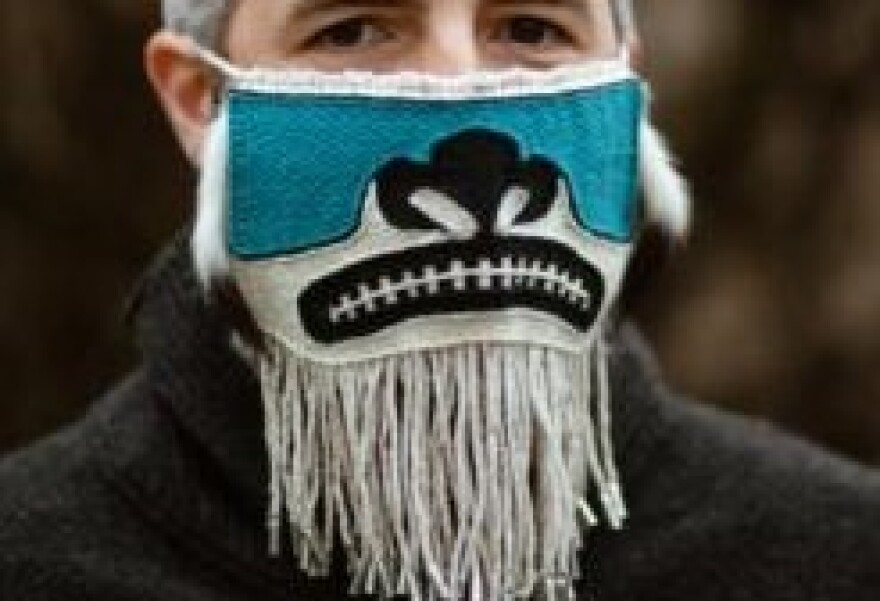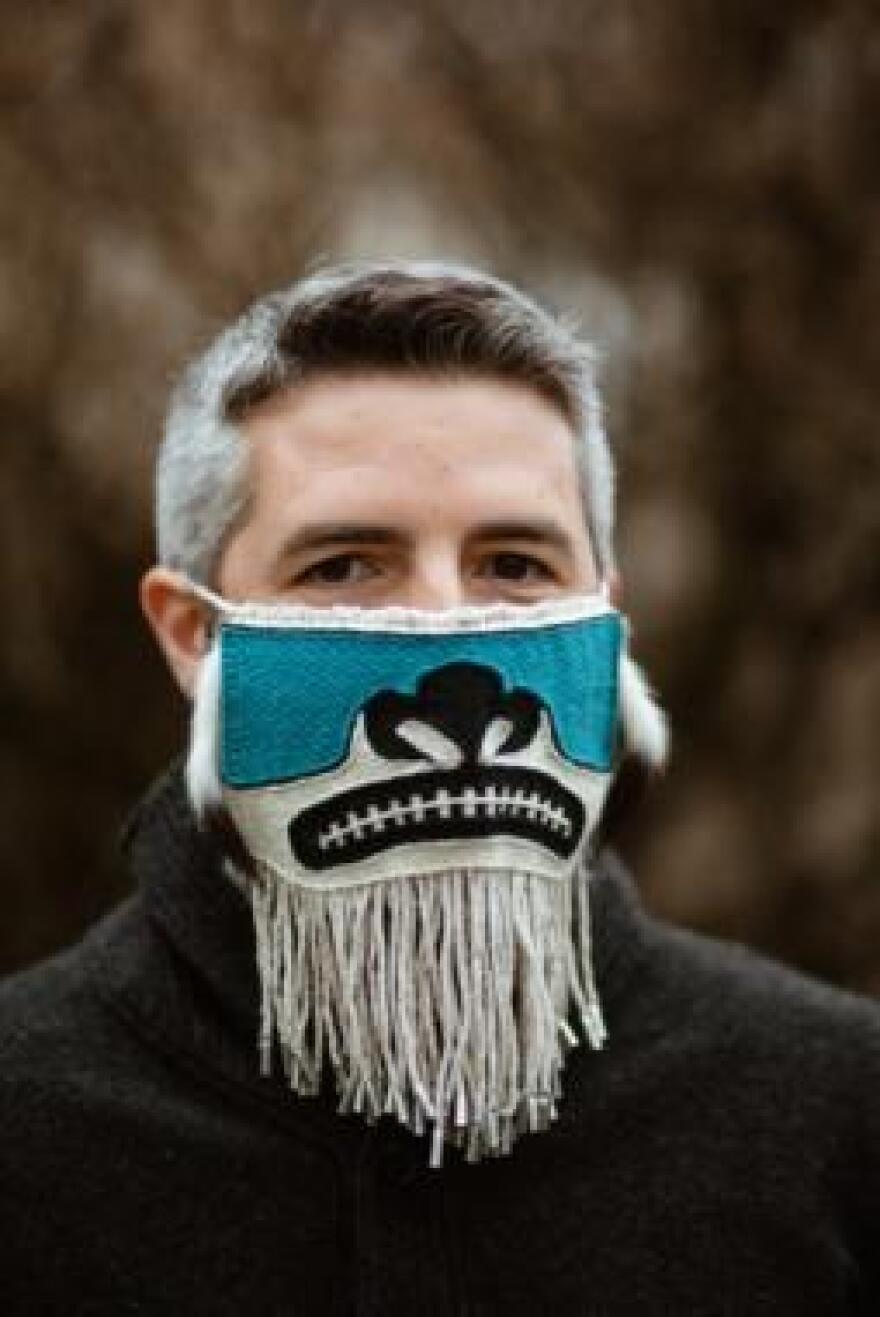Chilkat weaving has been practiced for hundreds of years by Indigenous people on the Northwest Coast. The intricate design is a kind of woven record, documenting history and clan migration.
In Juneau, one weaver wanted to create a work of art to reflect the biggest story of our time: the coronavirus. And Chilkat weaving seemed like the perfect medium to express that.
For Lily Hope, being hunkered down with her family has been a creatively productive time.
Get the latest coverage of the coronavirus in Alaska
“If the day was an orange, we are squeezing the drops out of it,” Hope said.
She’s a weaver and has been busy creating a commissioned Chilkat blanket in a private studio, a process that can take upwards of two years.
But recently, she made something else on a much tighter deadline at home, after she learned about an opportunity to create art about what’s going on right now. In early April, First American Art Magazine sent a call out for Indigenous artists to create masks, similar to the ones worn to prevent the spread of COVID-19.
“It was so intense to weave it on my floor with my children around me, in the midst of coordinated Zoom (calls) for my child who’s in public school and doing homeschool with my other four children,” Hope said. “It was a lot.”
RELATED: What is it like to balance a family, a fan club, and keeping a state safe from a global pandemic from a yurt? Find out on the latest episode of out podcast, "Alaska, Interrupted" with Alaska's Chief Medical Officer Anne Zink.
She drew inspiration from her mother, the late master weaver Clarissa Rizal, who created a full Chilkat mask several years ago.
Hope’s piece is called “Chilkat Protector.” It’s made from merino wool and cedar bark warp. Two ermine tails graze the cheeks. The mask covers the nose and mouth. In their place are the distinct ovoid shapes of the Chilkat face, an expression that’s confident and reassuring.
The mask isn’t something to be worn to the grocery store. It’s a work of art reflective of survival.
“When the person goes out, if they are a carrier, they are essentially protecting their whole community from being sick (by wearing a mask), and that’s foundational to the Tlingit, Haida, Tsimshian peoples. … My aunt says it best: ‘The mask serves to record that we took care of each other during this time.'”
Hope’s kids have begged her to make them one, too, but she estimates it took around 60 hours to weave the mask on a small loom. She has five kids, so that didn’t seem practical.
Hope wanted “Chilkat Protector” to show weavers were here during the pandemic and get the message across that Chilkat weaving warrants the designation of fine art and fine contemporary art.
RELATED: What Alaskans learned from ‘the mother of all pandemics’ in 1918
The mask has gotten an enthusiastic response online, and Hope received a Judge’s Choice award from First American Art Magazine.
Her piece stands out: It’s one of the only COVID-19 masks woven in the Chilkat tradition — a skill which has seen a revival, but weavers like Hope are still few.
However, Hope thinks weaving hasn’t always gotten the artistic respect it deserves. It’s seen as craft, rather than a fine art.
And while she was happy her mask was recognized in the exhibition, she thinks the art world still has a ways to go until it fully accepts weaving into the fold.
“A carved mask wins over the bead work, over the quill work, over the weaving,” Hope said. “And I love First American Art for putting it into the world. But I’m like, that is the constant conversation: Men’s work is fine art and recognized as best of show, and women’s work is still hustling to catch up.”
But “Chilkat Protector” seems to be changing that.
The Burke Museum in Seattle recently acquired it, and Hope said for the first time in her career, she’s created a commission calendar for other museums which have shown interest in her weaving another COVID-19-inspired mask.
Editor’s Note: This story has been corrected to reflect the mask was woven on a small loom, not a lap loom.


